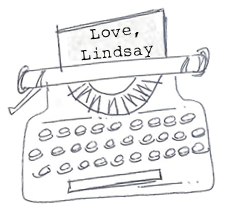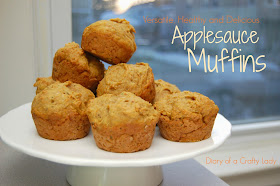Finishing my first quilt was a big accomplishment for me! I've been working on a few others since then, and my love for sewing and quilting continues to grow.
Each time I finish a quilt though, I have to call my mom to remind me how to sew the binding. I decided I had better try to document my process - which ultimately works very well and turns out beautifully!
Warning: this is a doozy. There are tons of pictures, tons of words, and I'm still not sure it will be clear enough to follow. Feel free to leave comments if you have suggestions or questions.
Binding a Quilt (front side machine stitched, back side hand stitched) with Mitered Corners
Choose a binding fabric and cut it into 2.75" strips. Sew all the strips together (short ends, right sides together, open up the seams and press). At this width, the binding ends up being thin - about 1/2" on either side of the quilt.
You'll need to add the lengths of all 4 sides of your quilt together to know how long to make your binding (plus a few extra inches).
Iron the entire long strip in half, lengthwise, wrong sides together. See picture below, left.
Starting on any edge of your quilt, at least a few inches from a corner (I start in the middle of one side), pin the binding to the top side of the quilt. Raw edge of quilt and raw edge of binding should be together. See picture above right. The folded edge of the binding is facing toward the middle of the quilt.
Keep pinning the binding to the quilt every few inches, and when you get to the corner, you'll follow the steps below:
Pic 1) Fold the tail of the binding straight up, positioning it so that its right edge is parallel with the next side of the quilt. The strip should form a 45 degree angle.
Pic 2) Fold the binding down, leaving the top fold flush with the edge of the quilt top behind it and its raw edge aligned with the next side of the quilt.
Pic 3 and 4) Shows that the 45 degree angle should be intact under the fold.
Once the binding is pinned all the way around the quilt, follow the steps in the picture below to sew the first side with a machine. Machine stitching the binding to the top side of the quilt gives you a nice even stitch on the side that people will primarily be looking at.
Beginning in at least 1" from the beginning of the binding, start sewing the binding to the quilt with 3/8" seam allowance (this is the edge of my presser foot). You want to leave this 1" binding flap for easy finishing later on.
Pic 1) When you near the corner make sure the angle is folded flat and away, as in the picture. Stop sewing at 3/8" from the corner (the same distance from the edge as your seam allowance). Back stitch a few stitches to secure. Cut your thread. (The red dash shows the section left un-stitched).
Pic 2) Fold the corner (the 45 degree angle fabric) over the other direction, so that the binding is flat based on the next side of the quilt.
Pic 3) Beginning 3/8" from the corner/top edge, start sewing along this next edge with 3/8" seam allowance until you reach the next corner. (The red dash shows the section left un-stitched).
FYI: I always use a few back-stitches when I start sewing to secure.
Repeat these steps 1-3 for all the sides and corners. (Ultimately, this will create a mitered corner.)
Pic 4) Where the two binding ends meet, you will need to leave an unsewn section in order to tuck one end inside the other. So, when you reach the point where you began sewing the binding to the quilt, leave 1" unsewn. 

Below, you will finish sewing the binding on the front side of the quilt by closing the gap.
Pic 1) Trim your binding with 1" overlap.
Pic 2) Fold the raw edge under on one end by 1/2".
Pic 3) Tuck the other end of the binding into the folded end of the binding, as shown.
Pic 4) Lay the binding flat against the quilt, with one end tucked inside the other. Pin it down. Complete the last couple inches of the sewing with the same 1/4" seam allowance.
Below is a picture of the binding entirely machine sewn on the first (front) side.
For the back side of the quilt, the binding will be hand sewn using an invisible stitch. Follow the steps below for an explanation on this process:
Pic 1 - way down below) Beginning in the middle of one side, fold the binding from front to back, making the crease along the edge of the quilt. Pin this down for a foot or so. I did not pin my binding all the way around. I found it was difficult to keep from getting poked while working on it! I pin to about a foot ahead of where I'm working as I work my way around the quilt. The binding should lay just past the machine stitching line. You want to cover this stitch line up on the back with your binding.
Pic 2) Begin stitching the binding to the backing by hand, using an invisible/hidden stitch.
INVISIBLE STITCH
Use a single strand of complimentary color thread. Tie a knot in the end. Pull the thread through the backing fabric between the edge of the quilt and the machine stitching line. See diagram below.
Following the diagram below, you go up through the red dot, catching a piece of the edge of the binding. (This is the folded edge of the binding). Then pull your thread all the way through.
Go down through the blue dot just above it, catching only the backing (do not go through to the front of the quilt). Your needle will then come up through the red dot diagonally across from it (about 1/4" away), catching a piece of the binding. Pull your thread all the way through.
Again, go down through the blue dot, catching only the backing. Your needle will then come up through the red dot (diagonally across from it), catching a piece of the edge of the binding. Pull your thread all the way through.
You will only see a small bit of thread (between each set of red/blue dots) by doing it this way. Nearly invisible!
Repeat this process until you get to the end of your thread. Loop and knot your thread under the binding, between the machine stitched line and the edge of your quilt, to tie off.
If this is not clear, I encourage you to look up hidden stitch or invisible stitch on youtube - there are lots of great videos to help! I always have to use a thimble or wrap some masking tape around my finger a few times to keep my finger from hurting while I push the needle through. I use a tiny, sharp needle.
Pic 3) When you reach a corner, carefully fold the binding over on both sides of the quilt near that corner. With a little help, the corner will naturally fold to form a point. You may have to prod and tuck a little bit, but it should end up looking like the picture.
Pic 4) Continue to use the invisible stitch all the way to the inside point of the corner, and then poke your needle all the way through to the front of the quilt at that inside point.
Continued below:
Pic 1) You have poked your needle all the way through from the back, and it will look like this poking out the front (pink is the front of the quilt).
Pic 2) Pull the thread through, and begin using the invisible stitch to go up the corner of the front side, to the top. Once you reach the top, poke the needle all the way through to the back.
Pic 3) You have poked your needle all the way through from front to back, and it will look like this poking out the back.
Pic 4) Pull the thread through, and begin using the invisible stitch to go down the corner of the back side, returning to the inside point on the back of the quilt. 

You will then continue your invisible stitch along the next side (see below). For each of the corners you will repeat steps 1-4 above.
Once you have lovingly (or cursingly) stitched the binding all the way around your quilt, it will look spectacular!! And you'll have a beautiful binding on a quilt you can cherish forever ;)
I tell you -- quilting can be addicting! I'll show you some of the other quilts I've finished since this one - and don't be surprised if this becomes a regular thing ;)
Stay cozy!

Follow me on Instagram @ diaryofacraftylady
Follow me on Facebook














.JPG)
